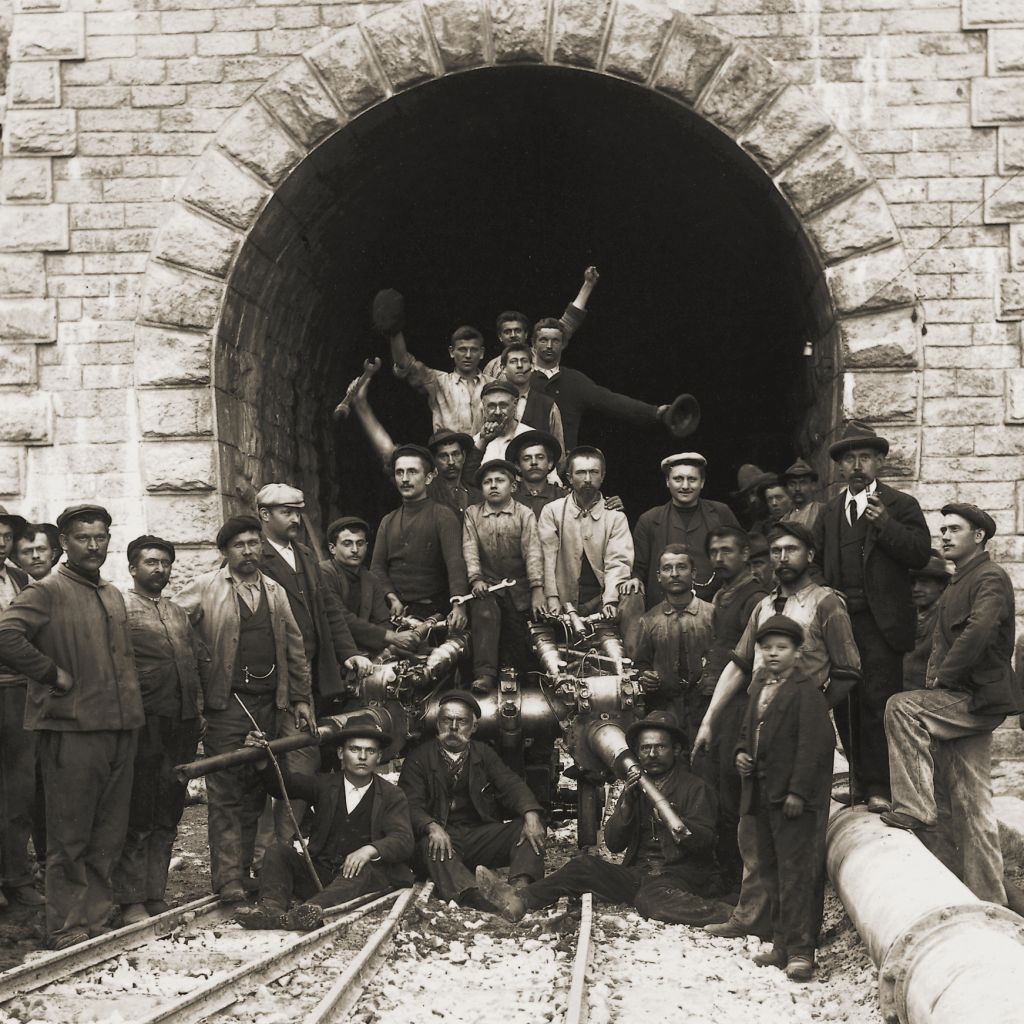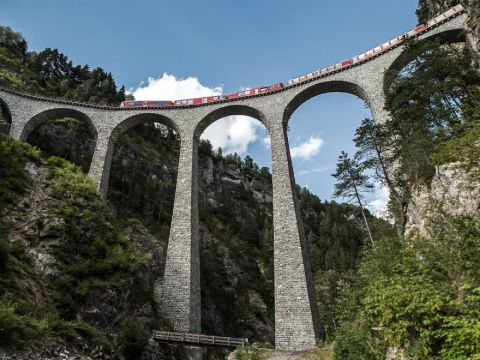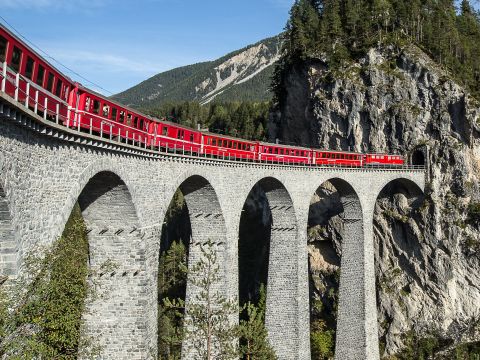A regional lifeline: The Albula Tunnel

An engineering masterpiece that has gone down in history: The construction of the original railway tunnel, which is now over 110 years old, required a massive human and technical effort. But time has taken its toll on the Albula Tunnel.
The RhB built the Albula Tunnel, which is the key piece of infrastructure on the line of the same name, between 1898 and 1904 to provide an important access link for the Engadin region. Indeed the tunnel went on to play a major role in the development, into a modern tourist destination with a worldwide reputation, of what had once been primarily an agricultural region, and it is still a vital part of the life of Upper Engadin.
It took just five years to drive the 5,856 metre-long tunnel through the solid rock of the Albula Massif. A total of 1,316 men worked on and in the tunnel. Countless numbers of them were injured, and 21 lost their lives. The main sticking-point of construction work was the penetration of the massive 100 metre-long cellular-limestone rock formation. It took about a year to deal with this difficult section. The tunnel was finally approved for railway operation on 1st July 1903.
The Albula Massif seems to have been made for all eternity. But even mountains are subject to change. Ice, water and the thousand metres of towering rock sitting on top had considerably weakened the tunnel’s structure since its inauguration, eventually resulting in serious damage. Repairs were becoming necessary more and more often. Drainage conduits were laid. Concrete was injected in to secure the arched structure. It was now clear, despite all these maintenance measures, that the Albula Tunnel was slowly coming to the end of its useful life. The time was therefore ripe for a new Albula Tunnel.

